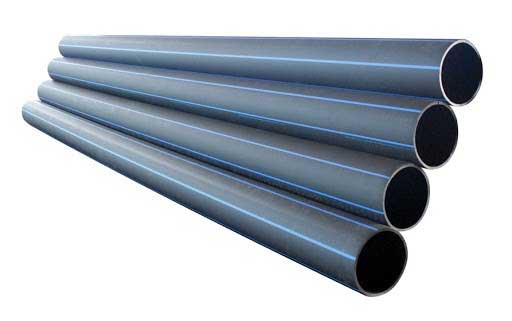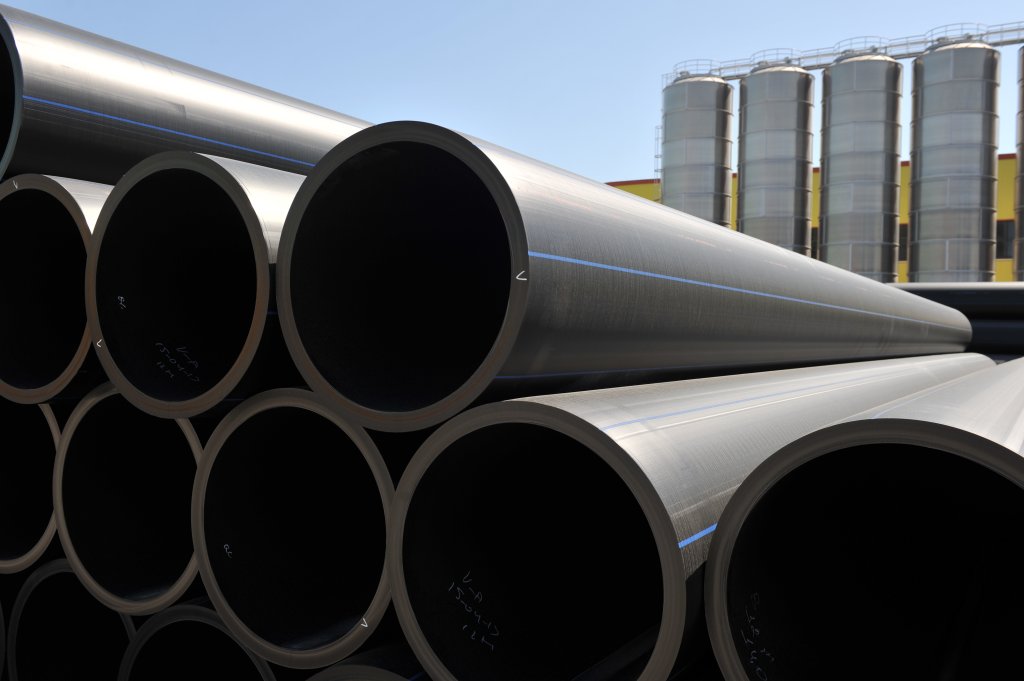The Crucial Steps for Effective Installation of HDPE Pipeline in Your Following Task
Successful installment of HDPE pipe needs mindful planning and execution. Secret steps consist of reviewing task needs, preparing the site, and selecting appropriate joining techniques. Each phase plays a critical role in guaranteeing the integrity and efficiency of the pipe. Comprehending these important steps can considerably affect the general success of the job - hdpe pipe fittings Midland TX. The subtleties of each step may hold the secret to overcoming usual obstacles encountered throughout setup.
Recognizing the Benefits of HDPE Pipe
High-density polyethylene (HDPE) pipeline uses various advantages that make it a recommended option for various applications. Its high resistance to rust and chemicals warranties toughness in demanding settings, considerably prolonging the lifespan of setups. Furthermore, HDPE's versatility permits for simpler setup, specifically in difficult surfaces, as it can bend without breaking. The light-weight nature of HDPE pipeline simplifies transport and handling, lowering labor costs during setup.
HDPE pipeline is understood for its low friction coefficient, which boosts fluid flow and minimizes power usage. Its seamless construction reduces the threat of leakages, adding to far better resource administration and environmental protection. Additionally, HDPE is recyclable, lining up with lasting techniques and lowering ecological impact. On the whole, the mix of stamina, flexibility, and eco-friendliness makes HDPE pipe a remarkable selection for a vast array of projects, from water circulation to industrial applications.
Preparation Your HDPE Pipe Installation
When preparing an installment of HDPE pipeline, mindful consideration of numerous key factors is vital to secure a successful task. First, job supervisors need to examine the certain requirements of the pipe, including the intended usage, flow prices, and ecological problems. Comprehending these specifications will certainly direct the option of appropriate pipe dimensions and material grade.
Next, timelines ought to be developed, factoring in procurement schedules and any type of possible delays. Coordination with local authorities for permits and governing compliance is likewise essential. In addition, an in-depth budget must be prepared, encompassing all expenses linked with materials, labor, and machinery.
Last but not least, it is essential to engage a certified team experienced in HDPE pipe installation. Their expertise will aid mitigate risks, warranty adherence to market standards, and eventually add to the project's success. Detailed preparation lays the foundation for a smooth setup procedure and long-lasting performance of the HDPE piping system.
Preparing the Website for Setup
Proper site prep work is vital for the effective installment of HDPE pipe. Prior to setup starts, the site should be completely assessed to ensure it fulfills all necessary demands. This includes evaluating the ground for existing frameworks, energies, and possible risks that could impede the installment process.

Right elevation and placement must be developed to maintain a regular slope for drainage functions. Proper drainage around the installment website is also vital to avoid water buildup, which can lead to problems down the line.
Strategies for Joining HDPE Water Lines
Achieving a trusted connection in between HDPE pipelines is important for making sure the stability and durability of the installation. Various methods exist for signing up with these pipelines, each suited for different project needs. Fusion welding is among one of the most usual techniques, making use of heat to bond the pipe finishes with each other, developing a seamless and sturdy connection. This technique can be further categorized into outlet blend and butt blend, relying on the pipe configurations.
Mechanical installations are one more alternative, using clamps and threaded connectors to join sections of HDPE pipeline. While typically faster to mount, they may call for added maintenance gradually. Electrofusion is a specific approach that includes utilizing electrical existing to warmth and fuse the pipelines through specifically made installations, guaranteeing a solid bond. Picking the ideal joining strategy is important, as it directly impacts the total performance and dependability of the HDPE piping system in the desired application.
Examining and Assessment of Installed Pipeline
The screening and evaluation of installed HDPE pipes are critical to ensuring their capability and durability. This procedure includes aesthetic assessment techniques, stress testing techniques, and leakage detection treatments to recognize prospective issues. By utilizing these methods, professionals can validate the honesty of the installation prior to it is put into use.
Visual Evaluation Techniques
Employing efficient aesthetic evaluation strategies is vital for assuring the integrity of mounted HDPE pipelines. Assessors ought to methodically examine all visible sections of the pipe to determine any signs of damage, imbalance, or inappropriate setup. Key indications to examine include joint stability, surface irregularities, and links. Inspectors may make use of devices such as amplifying glasses or electronic cameras to boost visibility and detail. It is vital to check for indications of ecological stress, such as twisting or too much flexing, which can jeopardize performance. Constant documentation of searchings for permits tracking modifications in time and assists guide required repair work. By adhering to well established visual inspection protocols, project teams can notably lower the risk of future failings and assure long-term integrity of the piping system.
Stress Checking Methods
Visual inspection functions as an initial measure, yet it is not adequate by itself to guarantee the performance of mounted HDPE pipelines. Stress testing methods are essential for guaranteeing the honesty of these systems. Usually, hydrostatic testing is employed, where the pipelines are loaded with water and subjected to pressure levels over the intended operating pressure. This approach aids identify weak points or potential leaks. Pneumatically-driven testing can also be made use of, although it carries higher threats due to the compressibility of website air. Despite the technique chosen, adhering to sector standards and security methods is essential. After carrying out stress tests, thorough documents is essential to verify the outcomes and confirm that the installment fulfills all functional needs prior to continuing to the following phase of the task.

Drip Discovery Procedures
Just how can one guarantee that set up HDPE pipelines are complimentary from leaks? Efficient leak discovery procedures are vital to protect the stability of the system. Aesthetic inspections must be executed, looking for indications of water accumulation or soil disintegration around pipeline joints. Following this, stress testing can confirm the system's strength. A common approach is the hydrostatic test, where water is introduced under pressure, keeping an eye on for declines that show potential leaks. Furthermore, progressed modern technologies, such as acoustic sensing units or infrared thermography, can find leakages that might not be visible. Routine tracking and maintenance further contribute to the long life of HDPE pipes, guaranteeing they stay leak-free throughout their operational life-span. Appropriate documentation of these treatments is necessary for compliance and future reference.
Maintenance Tips for Long-Term Performance
To guarantee the long life of HDPE pipes, establishing a normal assessment schedule is important. This positive technique enables the very early detection of possible problems, reducing pricey repair services. Furthermore, implementing proper cleaning methods will aid maintain peak performance and prevent build-up that can influence functionality.
Normal Assessment Schedule
Although HDPE pipelines are understood for their durability and resistance to deterioration, developing a regular assessment schedule is vital for ensuring their lasting efficiency. Routine assessments aid recognize possible concerns such as leaks, joint honesty, and ecological effects that might affect the pipe's capability. It is advised that evaluations occur at least biannually, or extra often in atmospheres with extreme conditions. American Plastics HDPE Pipe for Oilfield. During these analyses, visual checks ought to be carried out to discover signs of wear or damages. In addition, making use of innovation such as ultrasonic testing can supply further insights into the pipe's problem. By carrying out a structured assessment schedule, job managers can proactively attend to troubles, thus prolonging the life expectancy of HDPE pipes and preserving system performance
Appropriate Cleaning Techniques
Appropriate cleaning strategies play a crucial duty in maintaining the long-term performance of HDPE pipelines. Regular cleansing prevents the accumulation of debris, sediment, and biofilm, which can cause blockages and reduced circulation effectiveness. Operators must employ methods such as high-pressure water jetting or foam cleaning to properly get rid of pollutants without harming the pipeline surface area. It is crucial to stay clear of making use of rough chemicals that may break down HDPE product. In addition, set up upkeep checks should include visual evaluations for any signs of wear or damage. Correctly trained employees should carry out these cleaning processes, making sure compliance with safety and security and environmental policies. By implementing these techniques, the life expectancy of HDPE pipes can be substantially extended, guaranteeing optimal performance throughout their operational life.
Frequently Asked Concerns
What Are the Ecological Impacts of HDPE Pipeline Production?
The ecological impacts of HDPE pipe manufacturing include greenhouse gas discharges, power intake during production, prospective plastic pollution, and difficulties in reusing. HDPE's long life and resistance to corrosion can minimize some environmental issues.
Just How Does HDPE Pipe Compare to Various Other Products?

What Equipment Are Required for HDPE Pipe Installation?
Crucial tools for HDPE pipeline installation consist of a combination equipment, pipeline cutters, shovels, gauging tape, and safety and security equipment. Correct devices guarantees reliable, safe handling and setup, adding to the project's total success and stability.
Are There Any Type Of Certain Regulations for HDPE Pipe Installment?
Specific guidelines for HDPE pipeline installation differ by area, usually controlled by regional, state, or federal codes. Conformity with these policies assurances safety and security, environmental management, and functionality, making adherence essential for effective task end results.
Can HDPE Water Lines Be Recycled After Use?
Yes, HDPE pipes can be reused after usage. Their polycarbonate nature enables reprocessing, making them ideal for recycling right into brand-new items. This sustainability aspect contributes to environmental preservation and advertises circular economy methods in building.